Going to Lowell’s Boat Shop in Amesbury, Massachusetts, is like going to a dory candy store. Do you pick a straightforward rowing dory like the Salisbury Point Skiff, developed in the 1860s? How about the outboard-motor-powered version of the Amesbury Skiff, an adaptation from the 1920s? What about a high-sided Banks Dory, set up for traditional tholepin rowing? Having but one choice to make, I selected what I thought for me, and I suspect for many others, would be a fine compromise: a Sailing Surf Dory. A comparatively round-sided dory, the Sailing Surf Dory handles well under sail or oars. This boat is a 14-footer, and Lowell’s Boat Shop in Amesbury, Massachusetts, also builds 16’, 18’, and 20’ versions.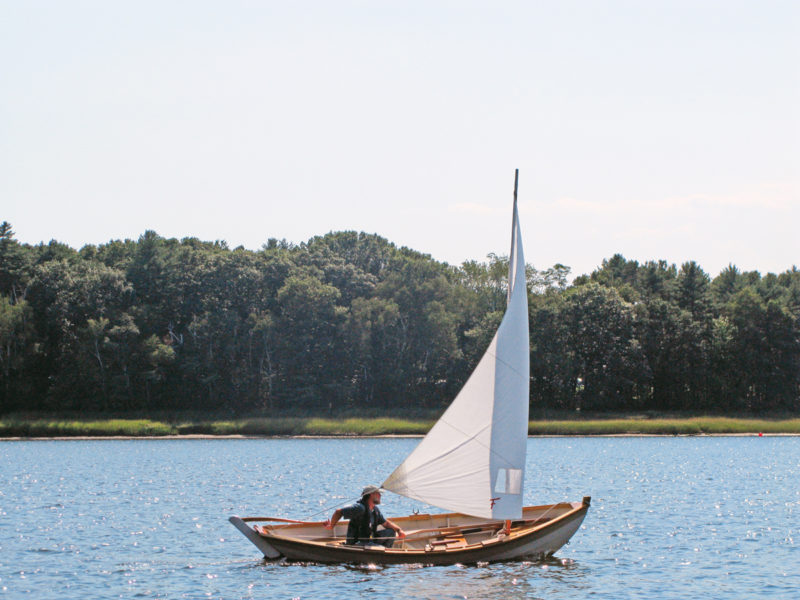 Corinne Ricciardi
Corinne Ricciardi
Join The Conversation
We welcome your comments about this article. If you’d like to include a photo or a video with your comment, please email the file or link.
Comments (2)
Leave a Reply
Stay On Course

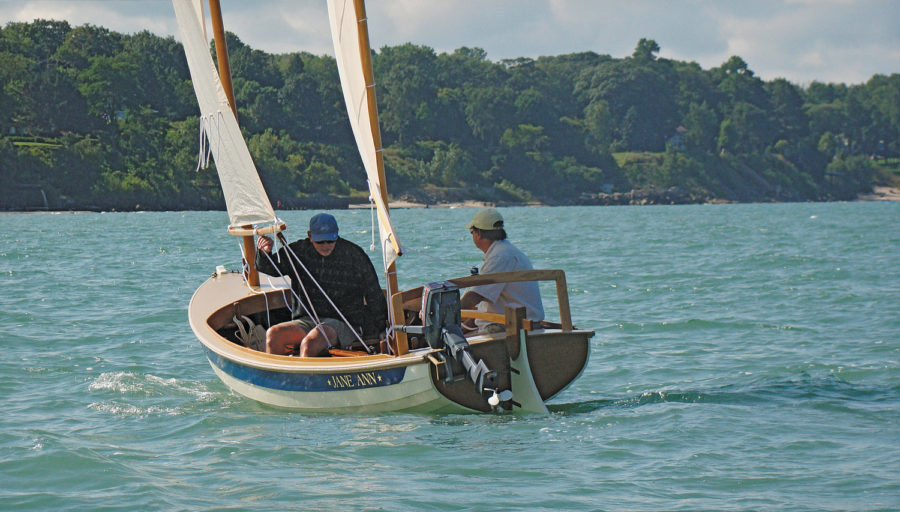
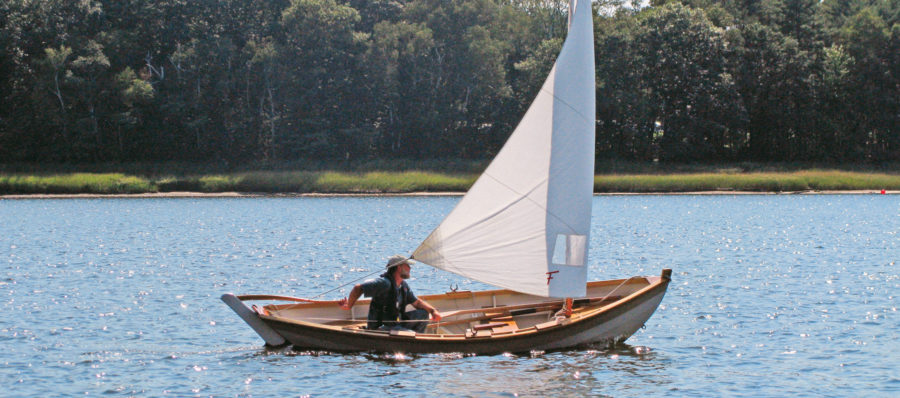
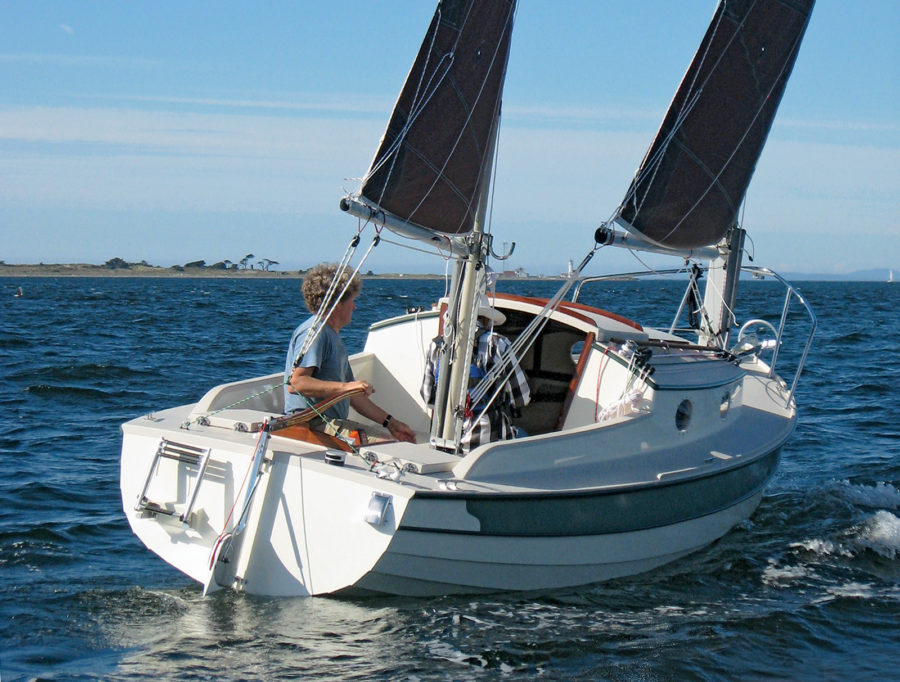

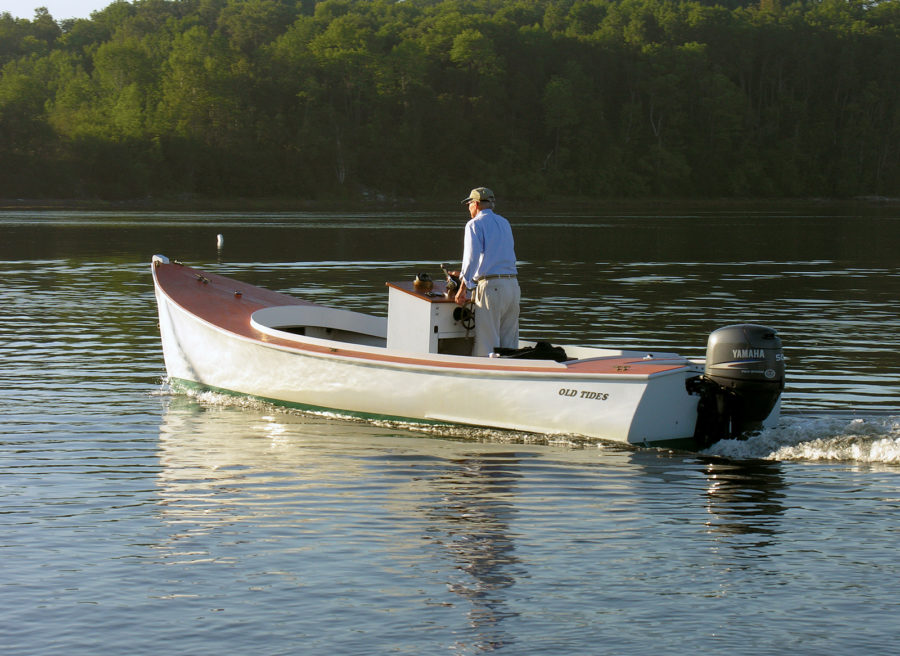
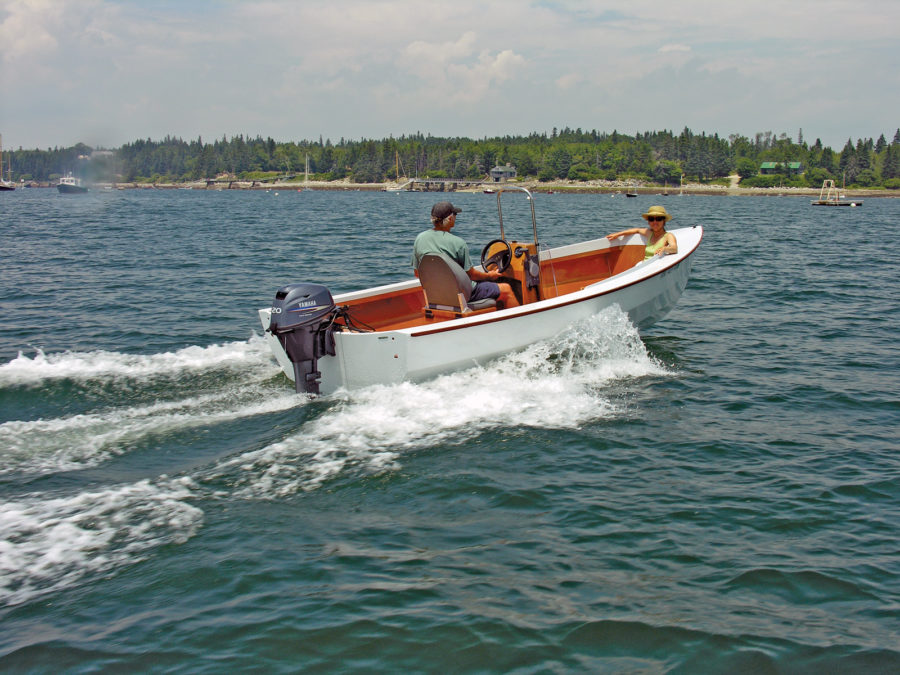
The Lowell Boat Shop / Museum offers classes in wooden boat building. I took two hands-on classes, taught by Graham McKay and his right-hand man Jeff: Pete Culler’s 13’ Good Little Skiff and a 15’ Amesbury Skiff – both hulls of traditional clenched copper nail lapstrake construction. I won the latter in the end of class build raffle and felt a bit of history. Other courses such as lofting (the boat in this article) and making a set of spruce oars were also very interesting. Great to be (relatively) near this historic shop-museum.
E. Strizhak
Framingham, Ma.
Beautiful boat. The 14 feet are the waterline, so it’s as big as my CLC NE Dory. The only thing I would hate is the tiller. It looks uncomfortable.